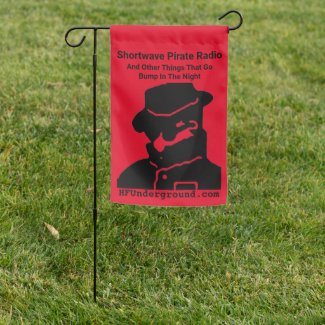361
10/11 meters / Re: 11 meters 26 OCT 2021
« on: October 26, 2021, 1330 UTC »
First tuned in at 1330 UTC - this is on the W3HFU KiwiSDR - the one with the 11 meter dipole antenna.
Some SSB activity on CB channel 36 LSB 27.365 MHz LSB, some AM voice on channel 40.
Somebody doing radio checks on CB channel 31 AM 27.315 MHz AM at 1330 UTC.
Truckers or other business type comms now on CB channel 1 26.965 MHz AM - 1332 UTC
"I'll take the 2A..." "doesn't have to be this route" "yeah, yeah, just bring that ticket down and we'll switch it out when you get back or when you get back down this way...another line is coming back up this way"
"they waited for all the rain and now they want off?"
CB channel 1 seems to be a local business user channel, at least at the moment.
At 1334 UTC, switched up to CB channel 19 AM 27.185 MHz AM...sounds like local trucker and highway traffic (as to be expected on 27.185 MHz). Noted signals coming in on 27.025 and 27.085 as well as 27.065, possibly indicating a band opening may be in the works for today.
1336 UTC - series of FSK bursts started up on CH 23 - 27.255 MHz - continued for about 90-120 seconds, ended with four bursts in very rapid sequence.
https://www.youtube.com/watch?v=Dehxg4qXHH8
27.255 MHz FSK AFSK Data Bursts Datalink Part 95 Subpart C RCRS CB Channel 23 Telemetry Telecommand
1353 UTC - the same FSK bursts that were noted about 20 minutes ago on frequency 27255 - appears to be the same system (same waveform on the waterfall display, same FSK characteristics - I guess its AFSK or audio frequency shift keying). I was able to get a quick video of the previous FSK data link signal data bursts on 27.255 MHz and that's on YouTube. There is no audio unfortunately. See video link above
Some SSB activity on CB channel 36 LSB 27.365 MHz LSB, some AM voice on channel 40.
Somebody doing radio checks on CB channel 31 AM 27.315 MHz AM at 1330 UTC.
Truckers or other business type comms now on CB channel 1 26.965 MHz AM - 1332 UTC
"I'll take the 2A..." "doesn't have to be this route" "yeah, yeah, just bring that ticket down and we'll switch it out when you get back or when you get back down this way...another line is coming back up this way"
"they waited for all the rain and now they want off?"
CB channel 1 seems to be a local business user channel, at least at the moment.
At 1334 UTC, switched up to CB channel 19 AM 27.185 MHz AM...sounds like local trucker and highway traffic (as to be expected on 27.185 MHz). Noted signals coming in on 27.025 and 27.085 as well as 27.065, possibly indicating a band opening may be in the works for today.
1336 UTC - series of FSK bursts started up on CH 23 - 27.255 MHz - continued for about 90-120 seconds, ended with four bursts in very rapid sequence.
https://www.youtube.com/watch?v=Dehxg4qXHH8
27.255 MHz FSK AFSK Data Bursts Datalink Part 95 Subpart C RCRS CB Channel 23 Telemetry Telecommand
1353 UTC - the same FSK bursts that were noted about 20 minutes ago on frequency 27255 - appears to be the same system (same waveform on the waterfall display, same FSK characteristics - I guess its AFSK or audio frequency shift keying). I was able to get a quick video of the previous FSK data link signal data bursts on 27.255 MHz and that's on YouTube. There is no audio unfortunately. See video link above





